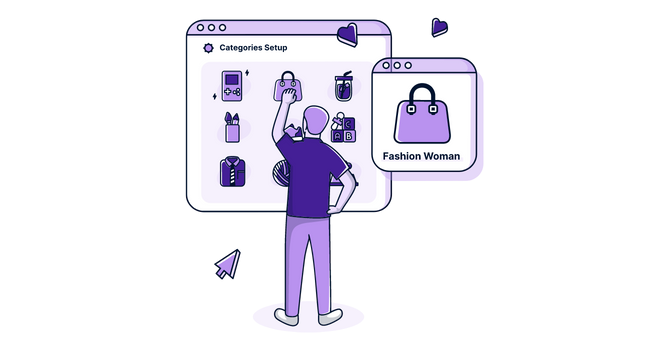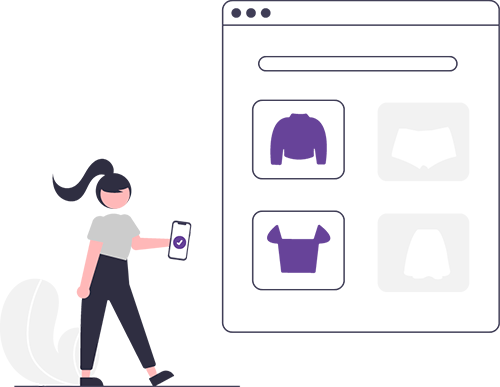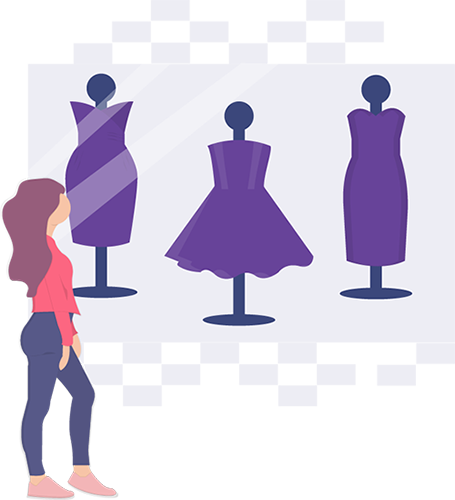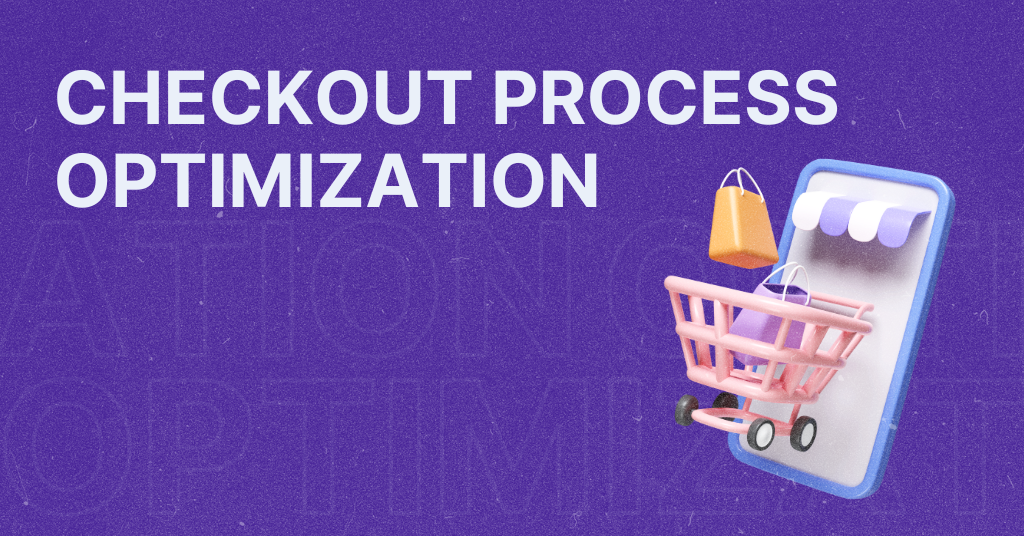
eCommerce for fashion – move your fashion business online and start earning more
So you wish to move your fashion business out of brick-and-mortar stores to the internet?
You’re in luck – eCommerce gives you an excellent chance to grow your fashion business without the expenses that traditional business expansion can include. Nonetheless, considering an online shop and beginning to build one are two different things.
So how to build eCommerce for fashion and get your product sales to skyrocket? Let’s dive into it.
Advantages of eCommerce for fashion
It’s simple to imagine a planet where consumers immediately attach to your brand name, and you end up being a famous brand overnight. However, getting to this point takes a LOT of effort.
You cannot wait for customers to find you themselves. You need to identify where they are, go there, and drag them back to your shop.
This line is what you need to know about starting the absolute best online business clothes store you can.
But why even bother with building an eCommerce business when you already have your physical store?
Well, the numbers answer it for themselves:
- eCommerce now holds over 27% of the global market, the number which is expanding yearly
- One research study found that 67% of Millennials choose to purchase online rather than to buy traditionally, opening the door to a vast target market of possible customers

Indeed, the most significant benefit of selling fashion clothes online is the lower obstacles to market entry.
Developing an online store can take a few days or weeks while starting an extra physical store can take a whole lot longer with a much higher first financial investment.
Even more, running a traditional retail space means hiring workers to keep the store open on a minimal timetable. In contrast, an eCommerce venture can run solo that is available to anybody 24/7.
And that is just the first part.
You can operate your business from anywhere in the world. eCommerce for fashion eliminates any geographical restrictions you would generally face with a workplace-based service.
You can be anywhere worldwide and also still effectively manage your eCommerce business.
The necessary products you require to supervise your online store from anywhere are; access to emails, the internet, and phones.
How can your sales be further increased with eCommerce for fashion? You can do this via a variety of sales initiatives such as special deals and internet marketing campaigns.
Trick sales strategies you can employ to increase your online sales consist of upselling and cross-marketing.
Upselling includes offering products that straight associate with the products the client has chosen to buy. These products are usually inexpensive, so the customer does not need to think about it, and they generally enhance the purchase they have made, making it an effortless buying choice.
By doing this, you motivate the average basket worth to go up.
Upselling permits you to encourage people to spend even more cash by getting added products.
Upselling is typically related to the main product your consumer is buying. For example, in shopping stores, this might consist of, “You may also like,” “Use with this,” “Perfect suit with,” “Why don’t you go professional.” etc.
You can also use various effective advertising and marketing initiatives on your site to urge the rate of interest from new customers, such as calls to activity and unique, time-sensitive deals. These encourage prospects to act while on your website and not just to watch.
As a result, you can turn internet visitors into sales.
Your online fashion business will allow you to sell at greater margins.
Selling at higher margins will undoubtedly make the profits you make on fashion products also greater. The shopping cart and payment methods on your eCommerce website will allow you to engage your customers and receive full payment from the client instantly.

How to start a fashion eCommerce business
Did you know: eCommerce for fashion clothing is a multi-billion-a-year market.
Without a doubt, one of the most preferred eCommerce particular niches, with it getting to $759 billion in 2021 and forecasts, will certainly reach $1 trillion by 2025.
However, beginning a successful online fashion store is more than simply buying a domain name and posting an ad. A successful shop depends on the niche you select, the branding you produce, the high quality of your clothes products and your website, and the customer service and user experience you provide for them.
So how to be part of it?
First, choose your niche.
Your future fashion clothes niche will undoubtedly have a straight impact on your prospective company plan, your potential buyers as well as the way you will position your online store on browsers.
For that, picking a niche is a crucial action.
Nevertheless, before selecting it, you ought to consider adhering to info: Your online shop should stand out from the crowd since this market is highly competitive.
For starting an online clothes business, you must choose the fashion niche you are passionate about. Another point to consider is that the future specific niche needs to be in high demand for you to profit from it.
Once you’ve identified a specific niche in the fashion industry, it’s time to start your online business with the first technical step – creating a website.
But before you do that, you must choose a domain name.
Selecting the appropriate domain name for your site is essential for your success.
If you pick the wrong domain, switching later without hurting your brand and search rankings can be a hassle. That’s why you must choose the best domain name from the start. When initially starting, it can be tough to develop appealing business name concepts with an excellent domain.
We recommend that you stick with the .com extension, avoid characters like slash between words and keep the domain name clean and short.
Once you’ve identified a specific niche in the fashion industry, it’s time to start your online business with the first technical step – creating a website.
You can make the website in many different ways – hardcoding, page builders, or various CMSs like WordPress. Each option has its advantages and disadvantages, and page builders and CMSs are generally cheaper options.
It may sound tempting to move your fashion business to the internet for cheap money, but keep in mind that your business will get more prominent in the long run, so website migration will be complex without losing any rankings.
Since the website is the only significant initial investment, the advice is to hire professionals who will tailor the ideal technical solution for your eCommerce for fashion.

Fashion eCommerce trends you shouldn’t miss
Of course, it is not enough to just choose a niche for you, a relevant domain name and create a quality website – you need to follow fashion eCommerce trends.
What are the e-commerce market apparel trends?
Being aware of innovative shopping options will give you a substantial advantage over your competitors, considering that your online shop would certainly satisfy customer expectations.
Below we share the checklist of leading technological innovations in the online fashion industry used by the best online apparel stores.
Artificial Intelligence (AI) in service of engaging your customers
Did you know that AI is currently called the 4th industrial revolution?
Nowadays, AI “feeds” itself with information to provide you with great results fast.
Generation Z is highly accepting of AI (personalization in particular), but older generations still tend to be wary of AI’s impact on their lives.
Nevertheless, today’s clients expect a great deal from an online shop: They want to discover products that fit them, an extensive selection to select from, user experience to be tailored for them specifically, which is what AI can achieve for you.
Hence, AI is gradually yet steadily changing the method clients purchase products online.
Some types of AI are used by a very particular niche, like virtual artists, which lets customers check out makeup online. Yet, some AI use instances are currently becoming widely implemented throughout the market, with a differing degree of success.
Using AI in 2021 for Visual Recognition is one of the most common online fashion AI usage situations in aesthetic recognition.
Artificial intelligence allows users to immediately see how a piece of clothing would fit on them, ensuring that they find a product that suits them at any time in your web store. In eCommerce for fashion, AI will make sure your customers click on that “add to cart” button.
Among the other things, you can use AI for:
- customer purchase predictions
- trend predictions
- purchasing recommendations
- finding an ideal price point recommendation
- managing the inventory
Chatbots are new retail assistants
Many merchants develop mobile applications to make online shopping significantly less complicated and also quicker for their clients.
At the same time, with online shopping, we are losing the personalized approach, the “personal touch” we are used to having in ordinary brick-and-mortar stores.
This is especially felt in fashion stores. When we are purchasing clothes, specifically brand clothes, we wish to feel unique, we intend to be taken care of, we intend to leave the shop looking our ideal and feeling on top of the world.
Fashion brand names are looking to modern technology to develop customized experiences.
For example, retail chatbots aid companies to provide a personal touch that’s in some cases missing in a digital space. Likewise, when clients purchase clothing, specifically brand tags, they intend to feel accommodated and understood.
Retail chatbots are aiding world-class brands like Burberry, ASOS, Sephora, Victoria’s Secret, and Tommy Hilfiger to attend to their client’s demands.
They’re bridging the gap between the customer and the store in a convenient and personalized method.
Retail chatbots are a must-have for brands that want to stay competitive in a frequently developing sector.
Chatbots aren’t just text-based.
Chatbots make use of graphic images, as well as product images to create intuitive experiences. The retail market is perhaps best positioned to benefit from these functions.
The experience for customers brings about brand commitment and selection. Retail chatbots likewise encourage shoppers to purchase even more with upselling and also cross-selling opportunities.
These aspects collaborated to drive revenue and also considerable returns for fashion brands.
Keep in mind: Retail chatbots and fashion influencers are much better together.
Social media platforms help brand names start vital discussions.
Fashion is becoming increasingly more social as consumers look to public figures for the most recent fads. As a result, businesses now work with these influencers and ramp up affiliate advertising, marketing tactics, and sponsored material.
Instagram and Facebook are introducing these fads. Shoppable articles, as well as brand-new formats, turn social accounts right into immersive shops.
The outcomes can be very powerful.
Through influencers, brands get in touch with a very involved as well as the relevant audience. In contrast to traditional media campaigns, the returns on investment can be much greater.
Chatbots pick up the conversation where a blog writer or influencer left off; that is – they continue a discussion in an informal and approachable way.
Retail chatbots additionally make new links as well as build brand-new connections. These dialogues are essential to creating and continuing a personal experience that stands apart. Therefore, retail chatbots include a much-needed range.
Creating individual experiences that accommodate such a large audience isn’t simple.
That’s why companies count on chatbots to make their multichannel technique work. Retail chatbots make it feasible for brands to connect with consumers on messaging and social media apps.
Chatbots can flawlessly imitate discussions with human representatives where necessary.
Turning eCommerce into AppCommerce
The demand for being mobile-ready has been discussed constantly.
However, many businesses don’t consider why customers choose to buy from retailers like Amazon.com rather than their stores.
The customer has the choice to download an app to open up in a portion of a minute to make purchases, or to await each mobile website to load and have to sign in each time (greatest drop-outs take place below).
According to our survey, more than 50% of customers choose to use a mobile application instead of an internet browser to access online shops. They feel that a native app makes it a lot easier for them to shop, particularly if they want to engage with a brand more than once. Apps provide a far more individualized buying experience, with customized deals, pointers, notices, and price cuts.

Various other reasons specified for this choice include not needing to remember shop URLs, logins, far better safety, and mobile applications as compared to the mobile browser.
When every fashion store is thinking about going online, the rise in competitors is increasing.
A regular consumer has the choice of purchasing from at least ten online fashion stores today. Every one of them provides:
- a competitive offer
- discount rate
- a first-purchase deal
- various products they want
In times when the customer has come to be a lot more price-conscious and available to discovering new brand names because of the added time they have, commitment is taking a hit.
Think of the number of ads you see on Instagram each day.
You look into one new store that provides furniture, as you are later on shown ten even more in less than a week.
By the end of the week, you have forgotten the first shop you visited. Customers who pick to download your shop’s app reveal a higher degree of commitment to your brand. They’re extra knowledgeable about what your brand has to use and are more likely to be closer to making purchases due to involving push notices and advertising and marketing projects you can offer via the app.
On the other hand, consumers that access a mobile site are more than likely simply discovering brand-new brand names or trying to obtain even more information regarding what you need to provide.
While researching consumer behaviour, we observed that customers also invested 4X more time in applications than websites.
By adapting to AppCommerce or creating a mobile app, you offer a holistic buying experience. You reach supply functions like creating wishlists, saving items to collections, filtering system search results as well as even more, offering high interactivity!
Not sure how to move an online fashion store from a physical store to a digital market? Schedule a free 30-minute session today and talk to our expert on how to start earning a lot more online!
Let’s book a 30-min mobile strategy session and give your shop a boost.
Let’s book a 30-min mobile strategy session and give your shop a boost.


